What Is Ecommerce SEO?

Suppose you want to buy new shoes online, and you go to Google and type “women’s running shoes.” In search results, you see all the different sites, each competing for your attention. That is essentially what ecommerce SEO is. It makes sure your online store’s “shoe shop” comes up first.
How does that happen? It is a combination of things. First, your website needs to have relevant content. That is, correctly using keywords such as “women’s running shoes” in your title, meta tags, and product descriptions. Second, your website’s structure and technical aspects should be optimized for search engines. This includes things like fast loading times, mobile-friendliness, and clear navigation. Lastly, credibility and authority should be established in the eyes of search engine algorithms. This can happen by getting other web servers to link to your website.
Ecommerce SEO basically makes your site more “search engine friendly” so that potential customers are able to find the online store through search results with easier reach. It is a strategic move that can leverage a lot of sales and online presence.
SEO vs. Ecommerce SEO
While both terms SEO and Ecommerce SEO aim to improve visibility to the search engine, they differ in nuances. SEO is a term that describes broader optimization techniques for websites in general for search engines. Such methods include keyword research, content creation, and link building. On the other hand, Ecommerce SEO is more specialized and tailored to online stores.
SEO aims to increase the number of visitors to an online site and its overall presence on the Internet. On the other hand, Ecommerce SEO aims to convert and sell more products. In a way, this means the optimization needed should be both for search engines and for users’ behaviors and buy intent.
Ecommerce SEO contains strategies specific to an online store. For example, optimization of product pages necessitates them to have proper descriptions and high-quality images and to contain relevant keywords. Category pages must also be structured and categorized to guide customers in navigating correctly. Another important consideration for Ecommerce SEO is search optimization in regions, ensuring that your store appears in the proper local search results.
Why Is SEO Important for Ecommerce Websites?
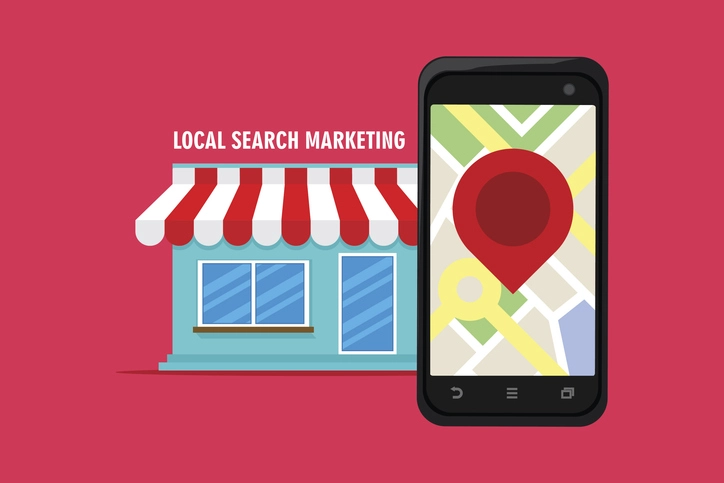
SEO is not only a technical concern for Ecommerce sites, but it is also a business necessity that has a strong technical component. Its value comes from its ability to produce real business outcomes.
You can also drive relevant traffic through SEO. It fundamentally focuses on enhancing a website’s position in the list of natural results for a particular search term. The better a website ranks for its relevant keywords, the more organic visits it will get, which will comprise users looking for specific products or services that the business offers. Targeted traffic converts easily to customers compared to general traffic.
It is essential to have a website that always ranks well for related keywords, as that establishes authority in an industry. Increased brand visibility and credibility lead to customer attraction and retention.
This further helps generate quality leads by attracting genuine potential customers who are actively researching and comparing products. This would, therefore, mean that SEO optimizes the content and structure of your website in a manner that brings out a positive user experience. This consequently ends up encouraging visitors to take action, say, sign up for a newsletter or make a purchase.
Compared to other traditional marketing channels, an enormous ROI can be expected from SEO. Although it does require some effort initially, the long-run benefits could pay out far more than what it takes to gain high traffic, leads, and sales. Because SEO is sustainable and scalable, it is the holy grail of strategies to help any business grow.
7 Tips to Create an Effective Ecommerce SEO Strategy
1. Exhaustive Keyword Research
Keywords are the backbone of a productive Ecommerce SEO strategy. Seek out what your target audience is looking for, and you can begin to optimize the content on your website to meet that intent. Tools like Google Keyword Planner, SEMrush, or Ahrefs can help find meaningful keywords and their search volume. Think in terms of long-tail keywords, which are more specific and lower on competition.
2. Optimize Product Pages for Conversions
Product pages are equivalent of a digital storefront for your online business. They should, therefore, be well-structured, full of information, and nice to look at. Use clear, concise descriptions of the product, high-resolution images, and reviews from customers to enhance user experience. Optimize for relevant keywords but maintain a natural and engaging tone. Add structured data to give search engines more information about your products, such as type of product, price, and availability.
3. Produce Relevant and Quality Content
Other than product pages, producing valuable content can really help raise your game in SEO efforts. Blogs, articles, guides, or tutorials filled with useful knowledge for your target audience attract organic traffic and boost social sharing. This will strengthen the authority of your website. Informative, engaging, and shareable content is the way forward.
4. Build a Strong Backlink Profile
Backlinks from other reliable websites show search engines that your content has good value and can be relied upon. Quality backlinks come about through guest posting, outreach, and shareable content. Low-quality or spammy links will only hurt your website’s rankings. Try building relationships with other businesses in your industry and link exchanges.
5. Mobile Optimization
While the number of mobile users is growing, it is very important that your website looks good on mobile devices. Google promotes websites that are more responsive on mobile devices in search result rankings. Compatibility tests should be done on many types of devices and browsers. Use a mobile-based template or responsive web design to ensure greater navigation across various screens.
6. Continuous Monitoring and Adjustment
SEO is an ongoing process. Monitor how you are doing with analytics on organic traffic, keyword rankings, and conversion rates. Let this information guide you to areas that need modification to your SEO plan. Keep up with new techniques for SEO and algorithm changes so that your web page will always be one step ahead of the rest.
7. Utilize Social Media Amplification
Social media sites will surely help share your content while making your website popular. Share blog posts, products, and other similar content on social media sites to get more traffic and connect with people. Enable social sharing with compelling visuals and calls to action. One should use social media advertising by targeting specific demographics and interests.
KPIs to Measure Ecommerce SEO Success

1. Organic Traffic
Organic traffic indicates your effectiveness in organic SEO. Organic traffic tells you how many visitors have reached your website by using search engines instead of just clicking on some paid ad. Over time, you can keep track of organic traffic by finding out how your visibility is shifting in the pages of the search engine. If you have steadily increased organic traffic, then your SEO strategies are working.
2. Organic Conversions
The aim of SEO is to generate sales and leads. Organic conversions mean purchases, sign-ups, or contact form submissions. All these indicate how good your conversion is in terms of business results. The more qualified visitors you attract to your site and can convert, the bigger your organic conversion rate.
3. Keyword Rankings
Now, monitoring how your website ranks for target keywords in the SERPs is more important. You will come to know just how well your optimization is working and what needs to be improved. You can monitor keyword trends using Google Search Console tools and distinguish which keywords show a trend or even spikes over time.
4. Click-Through Rate (CTR)
CTR refers to the fraction of people who click on your website’s search engine results. The more attractive or relevant the search results on your website, the higher your CTR. Optimize title tags, meta descriptions, and SERPs for increased CTRs. High CTRs feed into higher organic traffic and visibility.
5. Time on Site
The average time visitors spend on your website can be considered one of the most crucial user engagement benchmarks. If your visitors stay longer on your site, it probably means that they are interested and find your content relevant. Therefore, craft high-quality information that would keep the visitors surfing throughout your site. As a result, your search engine optimization rankings and user experience will be positively affected.
6. Bounce Rate
A bounce rate is the percentage of visitors who leave your website after viewing only one page. If the content is irrelevant or navigation on your website is confusing, you may find out about it through a high bounce rate. Make a user-friendly experience and have your content well-organized. A low bounce rate would indicate that visitors are getting value out of and finding really interesting content on your website.
By tracking these KPIs, you might gain some very useful insights about the performance of your Ecommerce SEO strategy and make some data-driven decisions to improve your website’s performance.
Ecommerce SEO Best Practices
1. Use Descriptive and Keyword-Rich Product Titles and Descriptions
Your product titles and descriptions are important for organic traffic and the information they provide to search engines. Ensure that your titles are descriptive, with your keywords, and that you are able to describe your products clearly. Use your descriptions to include relevant keywords and special features and benefits of your products.
2. Optimize Your Images with Alt Text
The other important aspect is images. Using images enhances the user experience and enhances search engine optimization. This means that adding Alt Text that would describe your image gives search engines information about the content itself. Make sure keywords are included in your alt text to help search engines understand the context of the images further.
3. Creating a Sitemap and Submitting it to Search Engines
A sitemap is an XML file that provides search engines with a structured view of the content you have on your website. Internal linking will help the search engines crawl through and index your pages more efficiently. Create a sitemap and submit it in the Google Search Console and the Bing Webmaster Tools.
4. Using Internal Linking to Connect Related Pages
Internal linking helps the search engines understand the structure and hierarchy of your website. Link together related pages to create a clear flow and make your website easier to navigate. Use anchor text with relevant keywords to add context for search engines.
5. Ensure Your Website is Mobile Friendly
Websites should be fully optimized for mobile devices due to the increasing number of mobile users among current users. According to Google, mobile-friendliness takes precedence in search ranking. Test a range of different devices and browsers to identify and solve compatibility issues.
6. Fresh and Updated Content on Your Website
Always update the content you publish, which implies new listings of products, updated information on the products, and publishing blog posts or articles. Updating content can improve the search engine ranking of your website and encourage returning visitors.
Best Ecommerce SEO Tools
1. Google Search Console
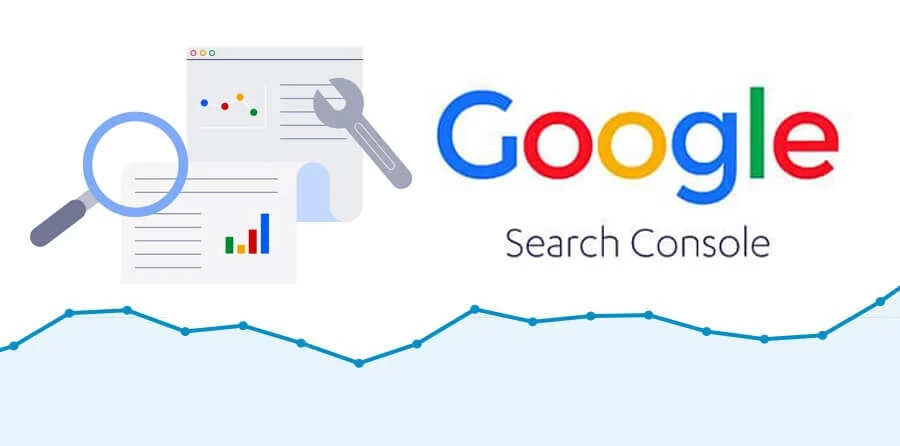
Google Search Console is a free service by Google that keeps you updated on the extent to which your site performs within the search results. There are several significant features available within Google Search Console:
- Indexing: Know how many pages of your website Google has indexed.
- Search Performance: Monitoring of the search performance, such as impressions, clicks, and average position.
- Crawling Errors: This could mean that Google might not crawl your pages due to errors that need to be fixed.
- Mobile Friendliness: Check the mobile responsiveness of your website and the need for further enhancements.
- Sitemaps: Submit a sitemap of your website to Google so that the site pages will be crawled and indexed better.
2. Google Analytics
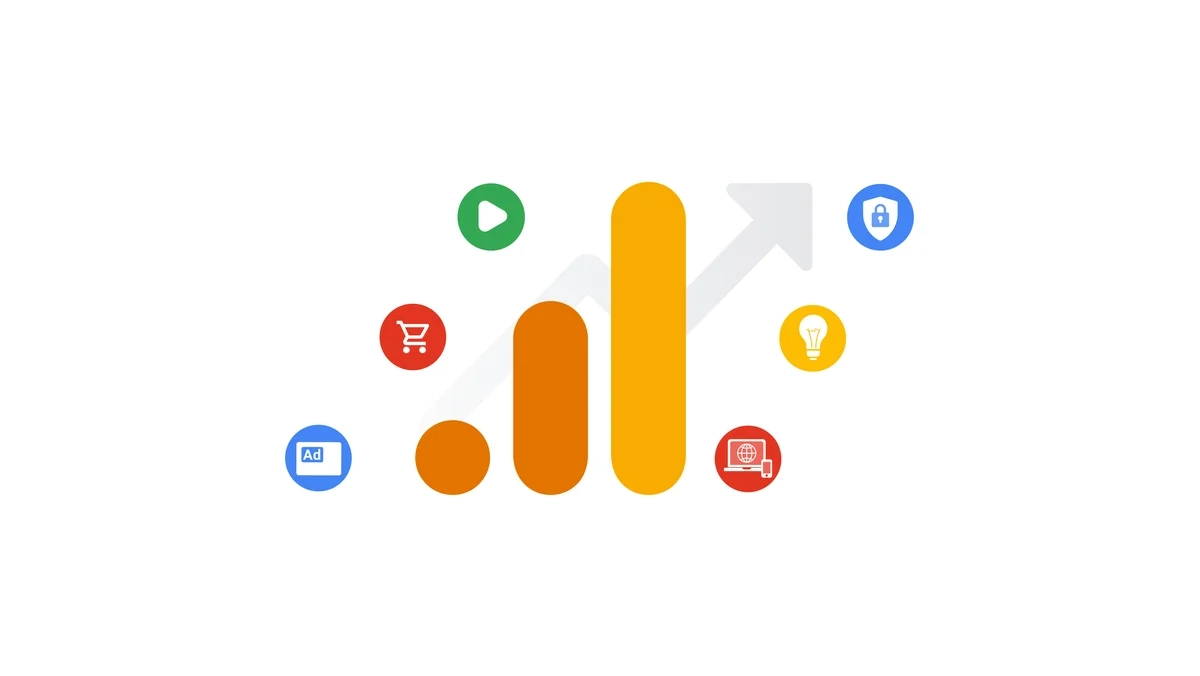
Google Analytics is powerful for monitoring the traffic on your website. It includes key features that are as follows:
- Traffic Sources: Track from which site or search engine your site is getting its traffic, be it a social media platform or direct visits.
- Audience Demographics: This helps you know who comes to your website by breaking down its demographic aspects, interests, and behaviors.
- Conversion Tracking: Track the conversion taking place on your website. It may be a purchase, sign-up, or contact form submissions.
- Goal Tracking: Set objectives to measure specific actions you want users to take on your website.
- Tracking Ecommerce: If you have an ecommerce website, Google Analytics will be quite invaluable in tracking sales and revenues besides other critical metrics.
3. Ahrefs

Ahrefs is also a backlink analysis tool that provides many more terms and feature benefits. It includes the following:
- Backlink Checker: Use this to analyze your backlink profile and ways to get new backlinks.
- Competitor Analysis: Compare your website’s backlink profile with your competitor’s and identify areas for improvement.
- Keyword Explorer: Search relevant keywords related to your website and analyze the difficulty score and the volume of searches for each keyword.
- Content Explorer: You can use Content Explorer to find the most trending content in your niche, which helps you create high-quality content.
- Website Audit: It is a technical SEO auditing of your website with the aim of identifying and fixing problems that are hindering the rankings of your website.
4. SEMrush
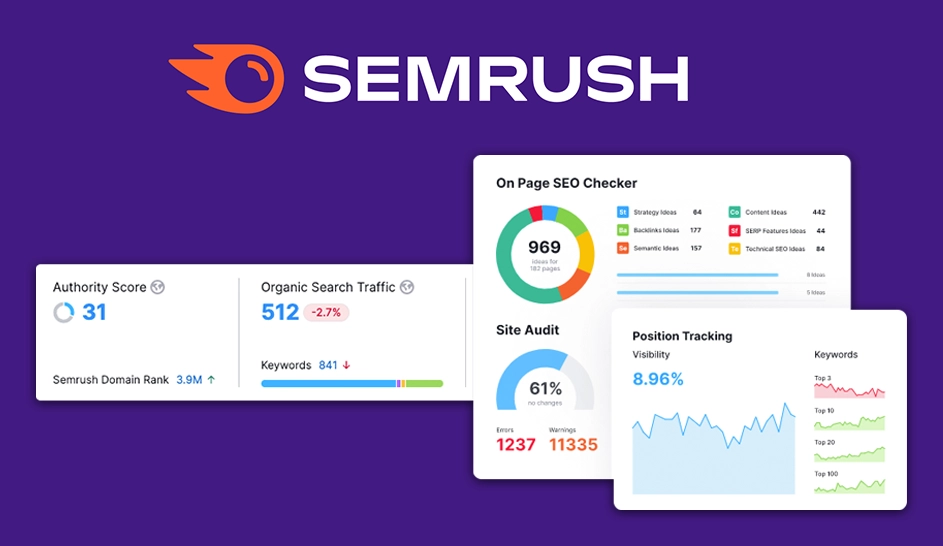
SEMrush is a comprehensive SEO and marketing toolkit that helps in optimizing your Ecommerce site through features that include the following:
- Keyword Research: SEMrush offers keyword research data, which includes search volume, competition, related keywords, and difficulty levels. This helps you discover the best keywords to apply to your business.
- Competitor Analysis: In SEMrush, you get to view what keyword rankings your competitors have for their backlink profiles. You can also see your competitors’ paid advertisements.
- Backlink Analysis: SEMrush helps you to investigate your backlink profile, detect toxic backlinks, and monitor the competitors’ backlinks so that you end up having a strong backlink profile.
- On-Page Optimization: They drive the optimizations for all your on-page SEO elements like title tag, meta description, and header tags. It also helps you find areas of improvement and enables you to make your content more search-friendly.
- Technical Optimization: SEMrush will give you every piece of equipment necessary to crawl your site for all kinds of errors and then suggest improvements.
5. Ubersuggest
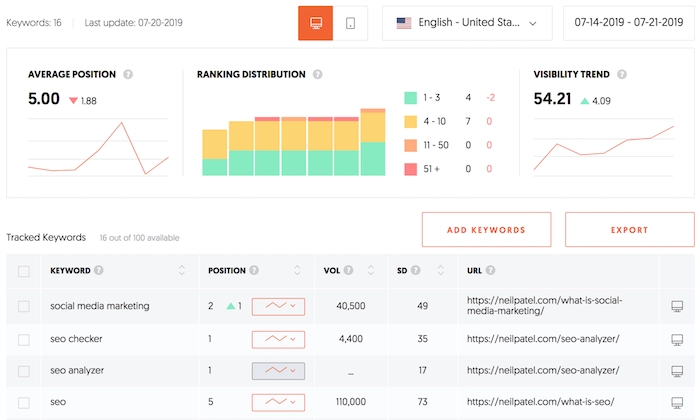
The all-in-one SEO tool Ubersuggest provides you with different features for optimizing your Ecommerce website. Some of its key features include:
- Keyword Research: It provides keyword-rich research data in terms of search volume, competition, related keywords, and difficulty. It also shows you what keywords are most relevant to your business.
- Content Ideas: Generate content ideas based on popular search terms, as well as your competitors’ content.
- Backlink Analysis: Analyze the backlinks of your site and ascertain opportunities to acquire new backlinks.
- Site Audit: Get a technical audit of your website along the lines of SEO analysis and identify issues that may be preventing the optimal ranking of your site.
- Competitor Analysis: Get the SEO analysis of the competitors to know where you are lacking.
6. Google Keyword Planner
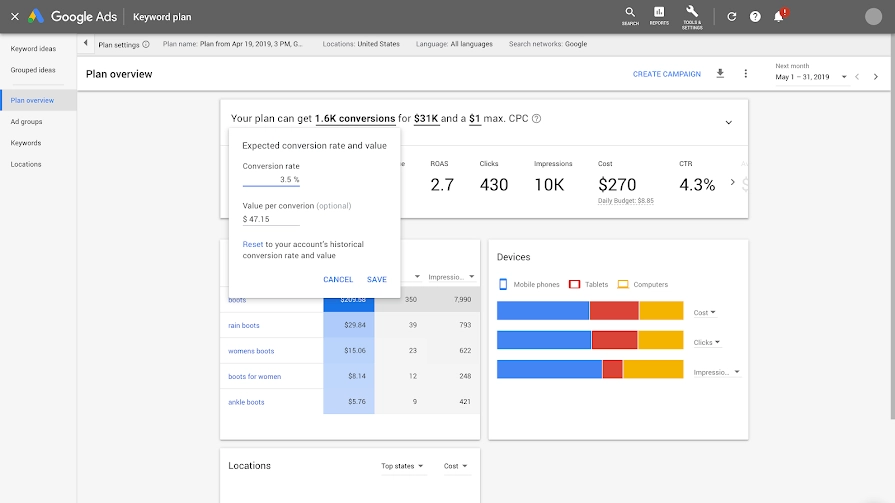
Google Keyword Planner is a free tool by Google that allows you to generate new keywords for your advertising campaigns. While it was originally designed for Google Ads, it can also be a valuable resource for SEO. Its features include:
- Keyword Ideas: Generate ideas for keywords based on seed keywords or phrases.
- Search Volume: Approximate the average number of searches per month for your chosen keywords.
- Competition: Identify how much competition exists for a targeted keyword or phrase.
- Ideas For Ad Groups: Generate ideas for Ad groups based on keywords.
- Optimize Your Keywords List: Use the Keyword Planner tool to find new keywords as well as refine your existing keyword list.
While there are so many SEO tools available online, the tools mentioned above rank top most for optimizing search rankings. By using these tools, you can find suitable keywords, check out the search volume and competition, optimize your website content, debug SEO, and, therefore, optimize your search rankings.
The Key Takeaways
- The difference between SEO and Ecommerce SEO, including why optimization of your site is important for search engines.
- Keyword research and optimization of product pages, content development, link building, mobile optimization, and others are all monitored continuously.
- Therefore, you should use key performance indicators and monitor your website’s performance to make informed data-driven decisions that optimize your SEO.
- SEO is dynamic, so you need to be updated on the best practices related to current trends.
- Use tools like SEMrush, Google Search Console, Google Analytics, Ahrefs, Ubersuggest, and Google Keyword Planner to streamline your SEO efforts and find that hidden gem of insight.
- SEO is not about search engines only but is largely about offering a great user experience. Make sure your website is easy to navigate, loads fast, and gives great content.
- SEO is long-term investment. It will take some time before you can really see the effects of doing it so be patient and keep on trying.
- SEO is not a one-time thing. Review your SEO strategy always and make the necessary adjustments so that your website stays competitive and productive.
- If you are unsure how to put up such strategies for SEO or need help about the technical aspects, consider consulting with an SEO professional.
- While optimizing the website, keep the targeted audience in mind. Create content that resonates with the target audience, their needs and interests to drive engagement and conversion.
The Bottomline
Ecommerce SEO is the most important component in the successful running of an online store. Optimizing your website for search engines can increase your visibility, bring more organic traffic to your website, and drive sales. Ecommerce SEO is a gradual and sustained effort and it needs constant monitoring and optimization from your end. So, with the strategies outlined above, you will be able to optimize your search engine ranking of your website and help you reach your business goals.







